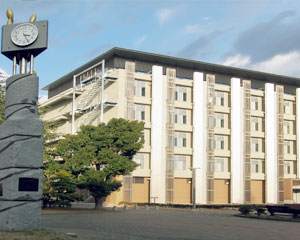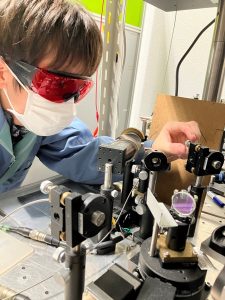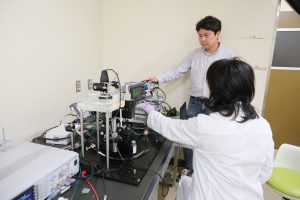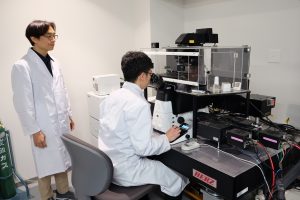Outline and Features of the Cooperative Major
What is the Cooperative Curriculum?
Shizuoka University and Hamamatsu University School of Medicine work together to formulate and implement the graduate curriculum. The universities jointly provide advanced education and research guidance in the field of medical photonics.
Admission quota
8 students (Shizuoka University:5 Hamamatsu University School of Medicine:3)
The Degree
Doctor of Medical Photonics

Shizuoka University
Innovative Photonics Evolution Research Center

Hamamatsu University School of Medicine
Photon Research Building
Features
The program pairs the strength of Shizuoka University—its learning environment and record of achievement in advanced opto-electronics research—with that of Hamamatsu University School of Medicine—its learning environment and record of achievement in medical research applying optical technologies—to administer courses of study appropriate at the student, faculty, and research level.
(1) Medical Photonics: A fusion of leading-edge research on opto-electronics at Shizuoka University and photo-medicine at the Hamamatsu University School of Medicine
Shizuoka University has an exceptional track record of leading edge research in advanced imaging and nanotechnology that links innovative achievements in photo emission and detection with advancements in electronic engineering and biometrics. The Hamamatsu University School of Medicine has an excellent track record in innovative medical technology research involving both the design and implementation of opto-electronic medical equipment, and the development of novel medical diagnostic and treatment methods employing advanced imaging technologies. The cooperatively offered Joint Degree Program between the two institutions consolidates the strengths of the two universities and ensures advanced studies and research guidance in the integrated domain of Medical Photonics.
(2) A synergy of human resources and advanced technologies to foster medical photonics research, development, and applications
Laboratory space for educational activities, research, and training is provided in the Research Institute of Electronics and the innovative Photonics Evolution Research Center (iPERC) at Shizuoka University, and in the Preeminent Medical Photonics Education & Research Center (MPERC) and the Innovative Medical Collaboration Building (iMec) at the Hamamatsu University School of Medicine. Within these innovative laboratories students conduct studies and advanced research in Medical Photonics under the supervision of faculty members with engineering and medical backgrounds and work on related joint projects with collaborating companies to gain practical experience in the field using cutting-edge equipment.
(3) A Medical Photonics research environment penetrating the front line of the real medicine
The University Hospital affiliated to the Hamamatsu University School of Medicine is a well established hub for collaborative work with industry partners that design, develop, and produce medical equipment. Under the guidance of their academic supervisors, graduate students in this Joint Degree Program in Medical Photonics can participate in the medical equipment research, design, and development process working directly with the research and engineering staff of the involved companies.

Shizuoka University

Shizuoka University

Hamamatsu University School of Medicine

Hamamatsu University School of Medicine




